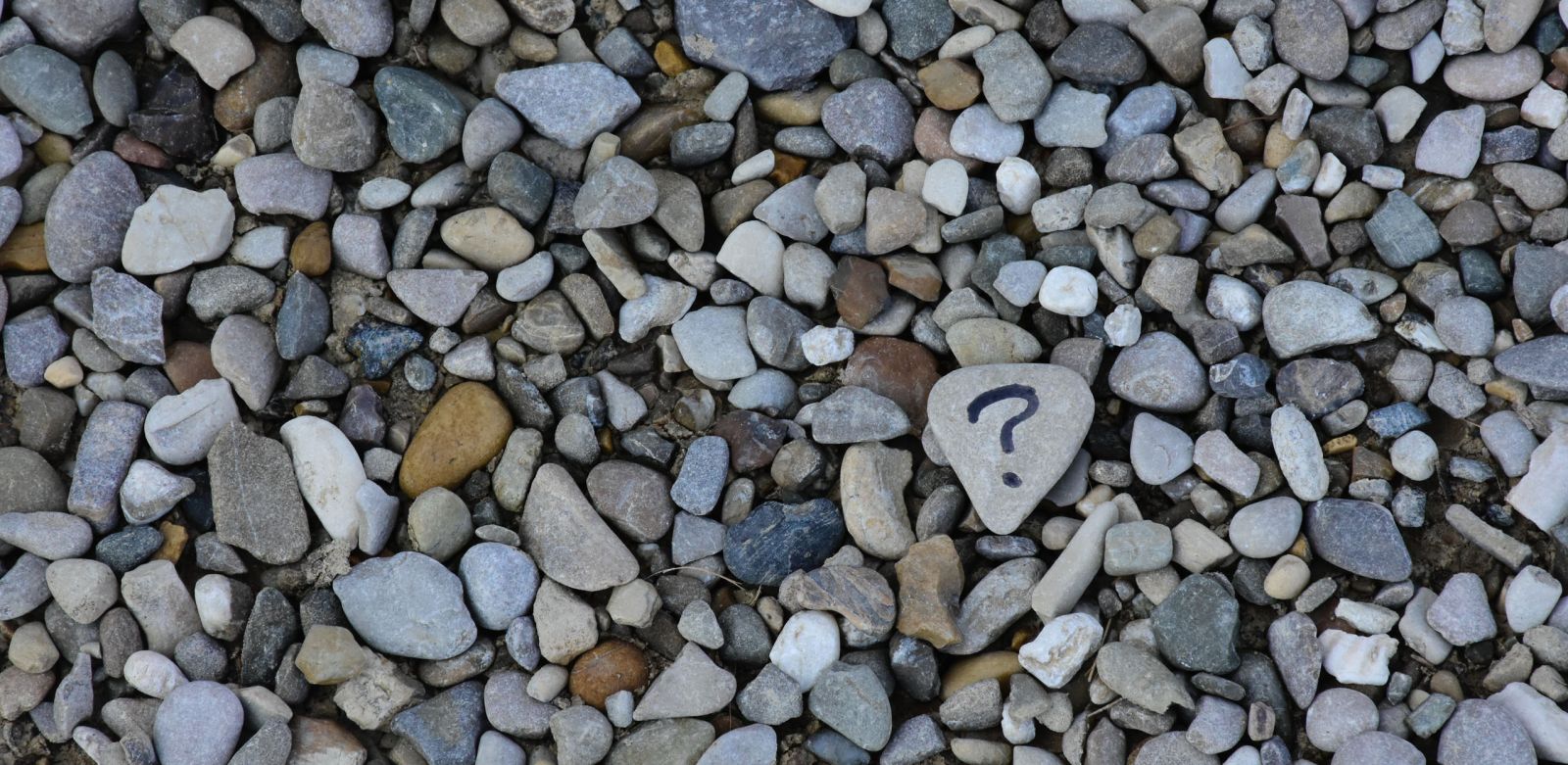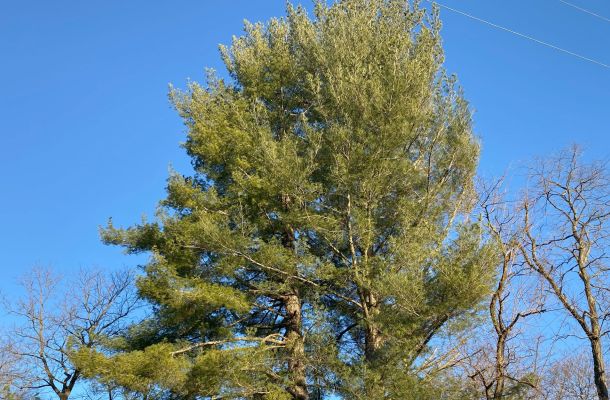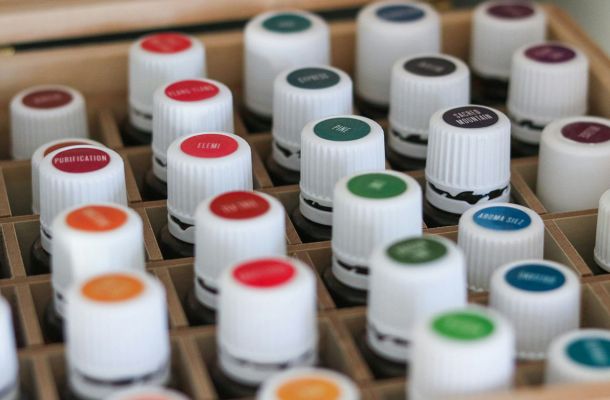Twelve Questions to Ask Those Who Invite You to Join Another Company – Volume 6, Number 4
Please feel free to share this newsletter!

Raindrop Messenger
Official Newsletter of CARE
The Center for Aromatherapy Research and Education
12923 BCR 800, Marble Hill, Missouri USA 63764
(573) 238-4846
NOTE: The information in this newsletter is intended for education purposes only. It is not provided in order to diagnose, prescribe, or treat any disease, illness, or injured condition of the body or mind. Anyone suffering from any disease, illness, or injury should consult with a physician or other appropriate licensed health care professional.
Twelve Questions to Ask Those Who Invite You to Join Another Company – Volume 6, Number 4
by David Stewart, PhD, DNM, IASP, BCRS, LSH
Originally Posted July – August 2008
1. Twelve Questions to Ask Those Who Invite You to
Join Another Company
by David Stewart
We are finding ourselves more frequently approached by competing essential oil companies to sell and promote their brand. They always claim to have “pure therapeutic grade” oils “as good or better than those of Young Living.” Maybe they do and maybe they don’t. Here are some questions to ask when approached by another essential oil company.
1. Does their company own any farms on which to raise herbs for oils? And if they do, are they new farms on land formerly polluted with herbicides, pesticides, and chemicals that contain residuals from the past, or are they farming land that is clean, which has never been cultivated or has been untilled for at least the last 50 years?
2. Does their company have their own fully equipped testing laboratory to verify an oil’s composition?
3. Do they have anyone on staff with a trained nose who can analyze oils by their smell? (There are less than 200 people in the world with noses sufficiently trained to discern the chemistry of a fragrance.)
4. If their company purchases oils from outside suppliers, do they visit the distilleries and farms of those suppliers periodically to observe if the herbs are grown organically, i.e. without pesticides, herbicides, or chemical fertilizers?
5. Do they know if the grower has a testing laboratory on the farm to determine when the crop is at its peak for oil harvesting?
6. Do they know if the crops were actually harvested at their peak time and, if so, was there an inordinant delay in taking them to the still and into the cookers?
7. Do they know if their distillery personnel understand the art and science of distilling, exactly how to pack the cookers, how to administer the steam, how to maintain minimum temperatures and pressures throughout the cooker, and how to continuously monitor the process throughout distillation to make sure the oil produced contains all of its components in the proper proportions?
8. If their supplier makes a mistake in the distillation or harvesting processes that results in an inferior grade of oil, does that supplier sell the oil anyway or do they discard it?
9. Do they know if the the cookers in the distilleries of their suppliers have domed lids or cone shaped lids? Most stills use dome-shaped lids. Cone topped cookers deliver a better grade of oil than dome tops.
10. Do they know if their suppliers supplement the distillation process with solvents to exatract additional oil from the plant matter?
11. Do they know if their suppliers bottle their oils directly from the distillery without modifying the composition of the natural oil by adding anything or taking anything away?
12. Do they know if their company has tested their company’s oils side by side with Young Living oils in the same lab to make a fair comparison? And if so, where is the data?
This is not a comprehensive list of questions you could ask, but if their answer to any or most of the above is “no,” or “I don’t know,” then how do they know their oils are “pure therapeutic grade” and that they are “as good or better than those of Young Living?” Without such knowledge, how can they make any verifiable claims that compare Young Living Oils with their brand?
With Young Living, you know that the answer to all of these questions is “Yes.”
Young Living owns and operates four large farms in Utah, Idaho, France, and Ecuador, all of which were clean and free of chemicals for at least 50 years before Young Living agreed to buy the land. In fact, the land in Idaho had never been farmed before Young Living, and the Ecuador farm is being cleared from primitive jungle, free from human contamination for thousands of years.
Young Living also has an expertly staffed, fully equipped laboratory for testing oils including a gas chromatograph, a mass spectrometer, and other equipment whose value adds up to hundreds of thousands of dollars.
Young Living also has small labs on their farms to test the plants right from the field as they mature to determine the exact season and time of day to harvest the crop for the best oil. This is necessary because plants change their chemistry throughout the season and throughout the day, varying from week to week and hour to hour.
Gary Young is one of the few people in the world who can smell an oil and tell you what compounds are present, which are missing, and in what quantities. An essential oil company needs a person like that to check every batch of oil to make sure it is up to therapeutic standards. Such people can discern certain aspects of oil chemistry that a laboratory cannot measure.
Young Living markets more than 100 species of oils and cannot possible raise them all on their own farms. When they purchase from other growers and suppliers, they not only may initial site visits to verify that the oils are being produced and packaged properly, but they have a program of making repeated visits from time to time to make sure the standards are being upheld.
Gary Young has personally trained his distillers in the art of distilling. Besides the science to know exactly how to pack the cookers but the still operator must also learn the art of how to listen to the sounds of the steam inside the cooker and to be able to feel the outside of the cooker and diagnose how things are going inside to determine what adjustments need to be made.
Young Living distills oils at minimum pressures and temperatures to gently coax the oil and all of its compounds into the finished product, even though significant money, time, and labor can be saved by distilling at high pressures and high temperatures, like many companies do. High pressure/high temperature distillation may produce an oil with the fragrance compounds of an oil, but not with the therapeutic compounds. Young Living never uses solvents to finish off the distilling process as many companies do.
By climbing inside of an actual cooker and visually noting the patterns of steam flow, Gary Young was able to determine that a dome-shaped lid caused the oil-bearing steam to curl and back flow into the plant mass, thus altering the chemistry and losing some constituents, while a cone-shaped lid allowed the steam to spiral directly up, out, and into the condenser without turbulence.
Many of the techniques and skills applied in growing and distilling Young Living oils are trade secrets, known only to Gary Young and his trusted employees.
Young Living oils are bottled as they emerge from the still in their complete natural state without adulteration (adding compounds) or refinement (removing compounds).
In a few instances when mistakes were made and a batch of oil grown and distilled by Young Living did not measure up to Gary Young’s standards, the oil was discarded, poured out on the ground. Some companies would have sold such oil anyhow, if not to their customers, then to another retailer. Young Living will never do that. They would rather be in short supply of a given species than to market an inferior product.
While you are asking questions to another company representative, you might also ask how long they have been in business? Young Living was founded in 1991. Gary bought its first farm in 1992 near St. Maries, Idaho, and its second farm in 1995 near Mona, Utah. Gary Young and the company are committed to ensuring a current and future supply of top grade essential oils indefinitely into the future.
If you ever get the opportunity, visit a Young Living farm and distillery and you will begin to see for yourself the care and dedication it takes to produce the finest essential oils in the world.
The factors that make Young Living unique and outstanding in the world of essential oil companies are so numerous they cannot all be presented in an article like this. When your life and your health are depending on it, you cannot afford to use oils whose chemistry and origins are uncertain. I have complete trust in the quality and integrity of Young Living oils. That is why I will neither use nor consider any other brand.
~^~^~^~^~^~^~^~^~^~^~^~^~^~^~^~^~^~^~^~^~^
2. How Do You Know Your Helichrysum is Good?
by David Stewart, PhD
Helichrysum is a universal essential oil, high in antioxidants, with numerous applications. It is also expensive to produce. Useful oils that are expensive to produce create a temptation on the part of oil suppliers to cheat in various ways. They can take a real oil and dilute it with a colorless, oderless substance. They can extract the oil from a similar plant species that is inexpensive to grow and distill, and then manipulate it into what may appear as a more exotic oil by deleting certain constituents or adding synthetic compounds to imitate the fragrance or taste of the expensive oil they wish to imitate. They may also cut costs in the distillation by doing so at high temperatures and high pressures that significantly reduces the distillation time and, thus, saves labor and fuel. They may also extract some oils by petrochemical solvents which leave toxic traces in the finished oil. Clever chemists can also construct a synthetic oil by combining the compounds in a laboratory that comprise the fragrance of an oil, but omitting the compounds that are oderless and do not participate in the fragrance, thus imitating the smell, but not the full constituency of the oil. All of these shortcuts and deceptions result in oils that may fulfill flavor or fragrance standards, even the AFNOR standard, but which lack the full suite of compounds necessary for the oil to have healing properties.
Helichrysum (Helichrysum italicum) is also known as Everlastinng and Immortelle. It is a member of the Aster/Daisy Family of plants. It has traditionally been wild-crafted, meaning gathered from the wild instead of cultivated. The oil comes from its flowers. It only grows in certain altitudes and climates.
The main ingredient in Helichrysum oil is neryl acetate (25-50%). Gary Young believes this compound is key to Helichrysum’s amazing therapeutic benefits. Neryl acetate has no detectable fragrance. The fragrance of Helichrysum is mainly from two ketones in the oil: italidione (15-20% and beta-diketone (1-2%), both of which are unique to Helichrysum, not being found in any other oil. Neryl acetate, however, is found in many oils in minor or trace amounts. Neroli, Rose, and Petitgrain contain 1-3% neryl acetate while Bergamot, Lavandin, Melissa and Myrtle contain 0-1%. Helichrysum stands apart from all other oils in the large concentration of neryl acetate it contains, considerably higher than any other oil.
Helichrysum also contains a significant quantity of sesquiterpenes (10-20%), mainly curcumene and caryophylene which may help regulate blood pressure and cholesterol and may have other beneficial properties. However, these sesquiterpenes have little or no fragrance and don’t contribute significantly to the aroma of Helichrysum. There is also l-limonene (8-13%), a monoterpene that adds an evergreen or pine-like note to the aroma of Helichrysum. Another key compound in Helichrysum is eugenol (1-2%), a phenol with anesthetic properties that contributes to the oil’s pain-relieving properties and adds a hint of clove to the aroma. There is also a minor amount of 1,8 cineol (1-2%) that adds a camphor-like fragrace to the oil. In addition to these main ingredients, there are more than a hundred other trace compounds, all of which have to be there for Helichrysum to provide the full spectrum of healing properties for which it is known. VIrtually none of these other compounds contribute to the fragrance.
Therefore, one could synthesize a pretty good imitation of Helichrysum in a laboratory that would closely mimic its fragrance, but contain none of its therapeutic qualities. Just combine the right proportions of synthetic italidione, beta-diketone, l-limonene, eugenol, and 1,8 cineol and you would have an oil that, to most people, would smell exactly like Helichrysum, but at a fraction of the cost of natural Helichrysum. In fact, you could increase the percent of 1,8 cineol a little, or add a little camphor, and the oil would have a stronger, more intense fragrance than therapeutic grade Helichrysum that might fool you into thinking that it was a better, stronger, more potent grade than the real thing.
However, a person with a trained nose would not be fooled and would know the difference right away. While neryl acetate has no fragrance, its presence in Helichrysum in its natural proportions of 25-50% alters the fragrance of all of the other ingredients. Thus, a fragrance expert can tell if neryl acetate is missing or in too low a concentration by the overall bouquet of the fragrance from all the other constituents. There are few people in the world who can do this.
Some time ago, Young Living received what was to have been a year’s supply of Helichrysum. As soon as Gary Young smelled it, he knew that neryl acetate, the main ingredient, was missing. He reported his analysis to Dr. Sue Chow, the head chemist in the Young Living Testing Laboratory who did an analysis. Sure enough, Gary was right. There was no neryl acetate.
So Gary rejected the shipment and returned it to the supplier. He refused to market a false oil to Young Living distributors, even though no one would have known unless they had an expert nose like Gary’s or a $100,000 gas chromatograph to analyze it. That shipment was refused even though this meant that Young Living would have to do without Helichrysum for an extended period of time. Such is the integrity of Young Living and its founder.
However, that batch of false Helichrysum was not wasted. When it went back to its supplier, it was sold to another company who markets it as therapeutic grade Helichrysum. Either that company lacks the technical expertise to recognize a manipulated, non-therapeutic grade of oil and has been duped by its wholesaler, or that company knows better but lacks sufficient integrity to refuse to peddle a fraud.
So how do you know your Helichrysum is good? Unless you have the nose for it or the advanced laboratory equipment to analyze it, you can’t know. Ultimately, you may be able to find out by trial and error by seeing if you get therapeutic results from the oil or not. But testing the authenticity of an oil by clinical trials is difficult and time-consuming requiring some skill in applying the scientific method. In the end, you can only know the quality of your oil by knowing a supplier who can identify the purity of a therapeutic grade oil and whom you can trust.
In Young Living we have both the know-how and the integrity. When you buy Young Living Helichrysum, you know it is good. Any other brand is anyone’s guess.
THE RAINDROP MESSENGER
Official Newsletter of CARE
The Center for Aromatherapy Research and Education
12923 BCR 800, Marble Hill, Missouri USA 63764
(573) 238-4846
NOTE: The information in this newsletter is intended for education purposes only. It is not provided in order to diagnose, prescribe, or treat any disease, illness, or injured condition of the body or mind. Anyone suffering from any disease, illness, or injury should consult with a physician or other appropriate licensed health care professional.
The Care Calendar
Topics covered in the Raindrop Messenger:
- 10 Reasons to Learn Raindrop
- 3 1/2 Day Intensive
- 3 Day Intensive
- Acid Reflux
- Advanced Chemistry of Essential Oils
- Advanced Emotional Release
- AFNOR
- Allergy Season
- Allopathy
- ALOES/SANDALWOOD
- and Emotional Release
- Annual CCI Summit
- Anointing
- Anointing with Oil & Laying on of Hands
- Applied Vitaflex
- Aroma Life
- Aromatherapist
- Aromatherapy
- Aromatherapy Certification
- Arthritis
- Believer
- BIBLE OILS
- Biblical Oils
- Birch Oil
- Black Widow
- Blue Chamomile
- Blue Spruce
- Body Systems
- cancer
- CARE Chemistry
- CARE Classes
- CARE Instructors
- CARE INTENSIVES
- CARE Seminars
- CARE training
- Carvacrol
- CCI Certification
- CCI Summit
- CCI Summit 2024
- CEDARWOOD
- Center for Aromatherapy Research and Education
- Chakras
- Charging for Raindrop
- Chemistry
- Chemistry 1&2
- Chemistry of Essential Oils
- Chemistry of Essential Oils Made Simple
- Chemotypes
- cleanses
- Clover
- Connection
- Continuing Education Credit
- CYPRESS
- Dangers Of Prescription Drugs
- Detoxifiers
- Developing Gratitude
- DI GIZE
- DIAMOND
- Do All You Can
- Earthquakes
- Education
- Elderberry
- ELECTROMAGNETIC FIELD
- EM FIELD
- Emotional Release
- Emotional Release with Oils
- Energize
- ENZYMES
- Essential Oils
- ESSENTIAL OILS FOR INTUITIVE PURPOSES
- Essiac tea
- Exodus Supplement
- Feelings Kit
- Flu
- Focus
- Frankincense
- FREQUENCES
- GALBANUM
- Garlic
- Gary Young
- German Chamomile
- Ginger
- Goals
- god's love
- Gold Frankincense Myrrh
- Grand Fir
- Grapefruit
- Growth
- Habits
- Harmonies Melodies & Symphonies with Essential Oils
- Heal Your Body
- Healing
- Healing Oils Of The Bible
- Helichrysum
- HERXING
- History of Anointing Oils
- Holy Anointing Oil
- Holy Incense
- Homeopathy
- Homeostatic Intelligence
- HYSSOP
- IASP
- Institute for Energy Wellness Studies
- Integrated Aromatic Science Practitioner
- Joy
- Juniper
- laughter
- Lavender
- Lee Stewart
- Legal
- lemongrass
- linen
- Liver
- Look Ahead.
- Love
- Lyme Disease
- Mind-Body Connection
- Mint
- Myrrh
- Myrtle Oil
- NAT
- Natural
- Natural Molecules
- Neuro-Auricular Technique
- never give up
- new age
- Ningxia
- Ningxia Red
- Non-Nutritive
- Nova Vita
- Ocotea Oil
- Onycha
- ORAC SCALE
- Oregano
- Oregano oil
- Overcoming Diabetes
- patchouly
- Peruvian Chocolate
- Pest Control
- pheromones
- phosphoric acid
- Photoxicity
- Pine
- POO-ROMATHERAPY
- Practitioner
- Preparation
- Protocel
- Pure Therapeutic Grade Essential Oil
- Quantum Physics
- Raindrop
- Raindrop and Vitaflex Techniques
- Raindrop certification
- Raindrop instructors
- Raindrop Technique
- Raindrop Technique Training
- Raindrop Training
- Raindrop Without a License
- RC Blend
- Relationship
- ringing in the ears
- Rose Essential Oil
- ROSE OF SHARON/CISTUS
- Rose Oil
- Safe Insect Repellants
- scar-b-gone
- Science Of Essential Oils Made Simple
- Sensitivities to Essential Oils
- sick building syndrome
- SPIKENARD
- Stay Positive
- staying healthy
- Success
- Supervisor Training
- Synthetic Compounds
- tansy
- Tea Tree
- The Blood Brain Barrier
- the Ecuador Clinic
- THE FIRST IMPRESSION TECHNIQUE
- the Mind-Body Connection
- THE PRAYER OF JABEZ
- The Quantum Connection
- THE SLEEP TECHNIQUE
- Therapeutic Grade
- Thieves Household Cleaner
- Thieves Oil
- Thyme
- Thyme Oil
- Tinnitus
- Transformation
- Transformation Oil Blend
- Twelve Questions to Ask Those Who Invite You to Join Another Company
- unresolved emotions
- valor blend
- Vita Flex
- Vitaflex
- Vitaflex and Raindrop
- water
- Wealth and Spirituality
- Wintergreen
- Wolfberries
- Ylang Ylang
- YLEO
- Young Living business
- Young Living Essential Oils
- Young Living Oils and Products


